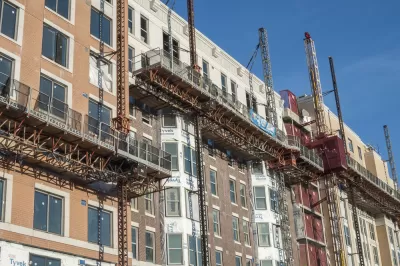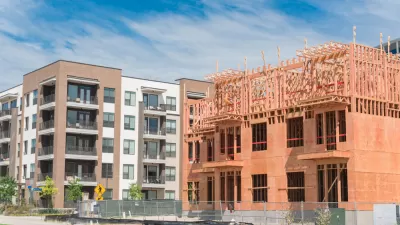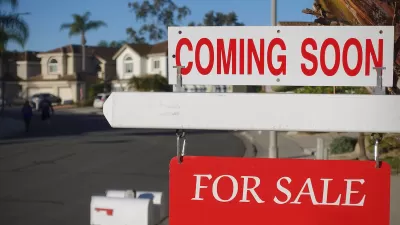A large amount of new rental units have come online in recent months in Washington, D.C., and the housing market has seen a surprising amount of upheaval as a result.

Rents have been dropping in Washington, D.C., and in surprising neighborhoods.
Joe Banister reports that it wasn't necessarily a surprise that rents have dropped, given a large amount of new supply hitting the market this year, but there was still an element of surprise when analysis looked at "the submarkets where that rent drop was concentrated."
Banister is sharing analysis from Delta Associates, which found that "District-wide rents for Class-A apartment buildings decreased by 1.3% year-over-year to an average monthly rate of $2,585, according to research firm Delta Associates, and Class-B rents experienced a drop of 0.6%."
However, established multi-family neighborhoods with high rental prices and slow delivery of new supply also saw new rent decreases—submarkets like Columbia Heights/Shaw and Central D.C., which includes neighborhoods like Dupont Circle, Logan Circle, and Mount Vernon Triangle.
One the flip side of these decreased rents in slowly developing neighborhoods were increased rents in neighborhoods that saw an influx of new developments. According to Banister, "In the Capitol Hill/Capitol Riverfront/Southwest D.C. submarket, Class-A rents grew by 3.2% to an average of $2,410. That submarket absorbed 1,655 units during the 12 months ending Sept. 30, comprising nearly half of D.C.'s total absorption over that period."
Delta Associates President Will Rich is quoted in the article explaining the rent trends in D.C. as a result of shifting preferences among renters.
FULL STORY: D.C. Apartment Rents Continue To Decline, But Not Where Experts Predicted

Alabama: Trump Terminates Settlements for Black Communities Harmed By Raw Sewage
Trump deemed the landmark civil rights agreement “illegal DEI and environmental justice policy.”

Planetizen Federal Action Tracker
A weekly monitor of how Trump’s orders and actions are impacting planners and planning in America.

Why Should We Subsidize Public Transportation?
Many public transit agencies face financial stress due to rising costs, declining fare revenue, and declining subsidies. Transit advocates must provide a strong business case for increasing public transit funding.

Understanding Road Diets
An explainer from Momentum highlights the advantages of reducing vehicle lanes in favor of more bike, transit, and pedestrian infrastructure.

New California Law Regulates Warehouse Pollution
A new law tightens building and emissions regulations for large distribution warehouses to mitigate air pollution and traffic in surrounding communities.

Phoenix Announces Opening Date for Light Rail Extension
The South Central extension will connect South Phoenix to downtown and other major hubs starting on June 7.
Urban Design for Planners 1: Software Tools
This six-course series explores essential urban design concepts using open source software and equips planners with the tools they need to participate fully in the urban design process.
Planning for Universal Design
Learn the tools for implementing Universal Design in planning regulations.
Caltrans
Smith Gee Studio
Institute for Housing and Urban Development Studies (IHS)
City of Grandview
Harvard GSD Executive Education
Toledo-Lucas County Plan Commissions
Salt Lake City
NYU Wagner Graduate School of Public Service





























